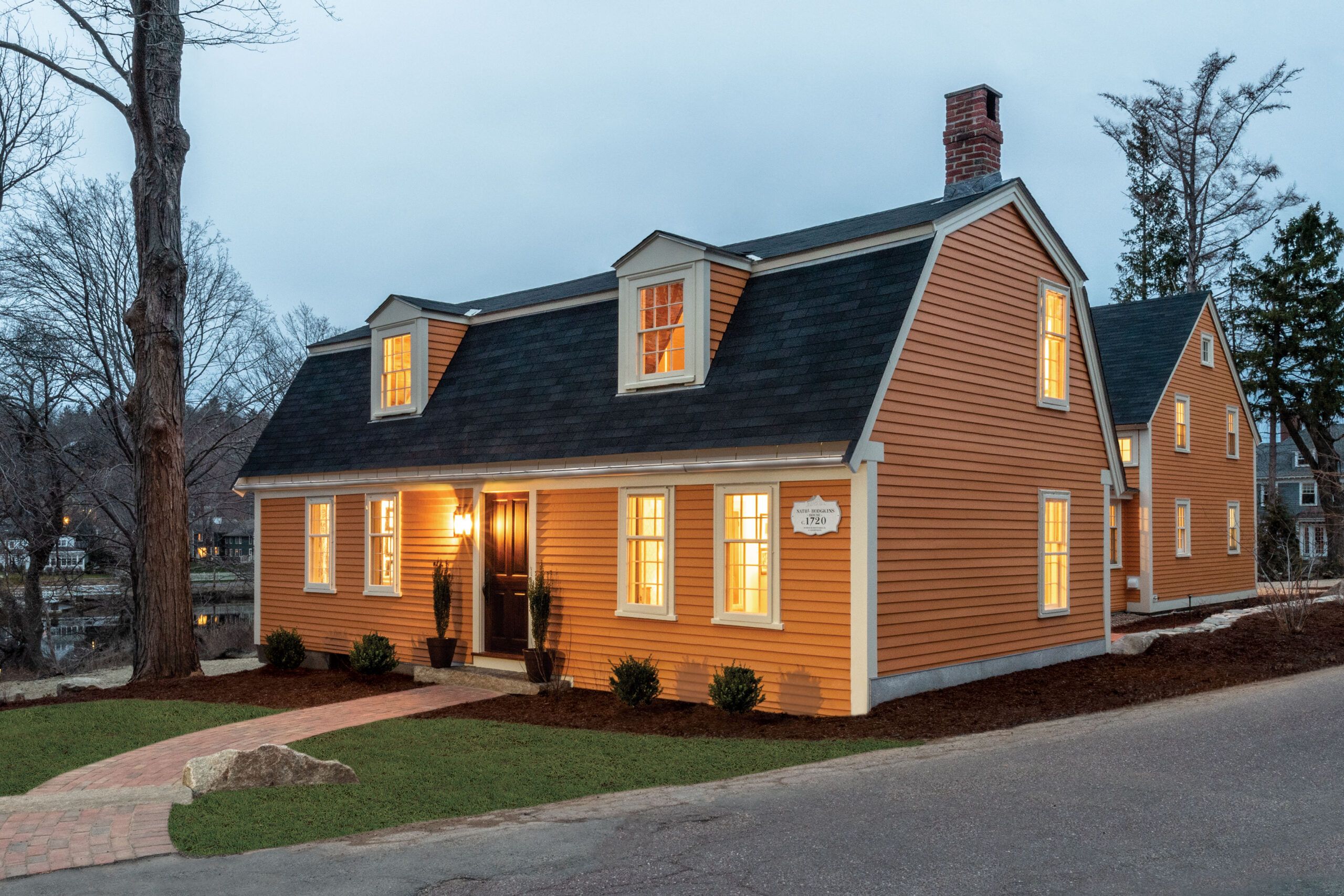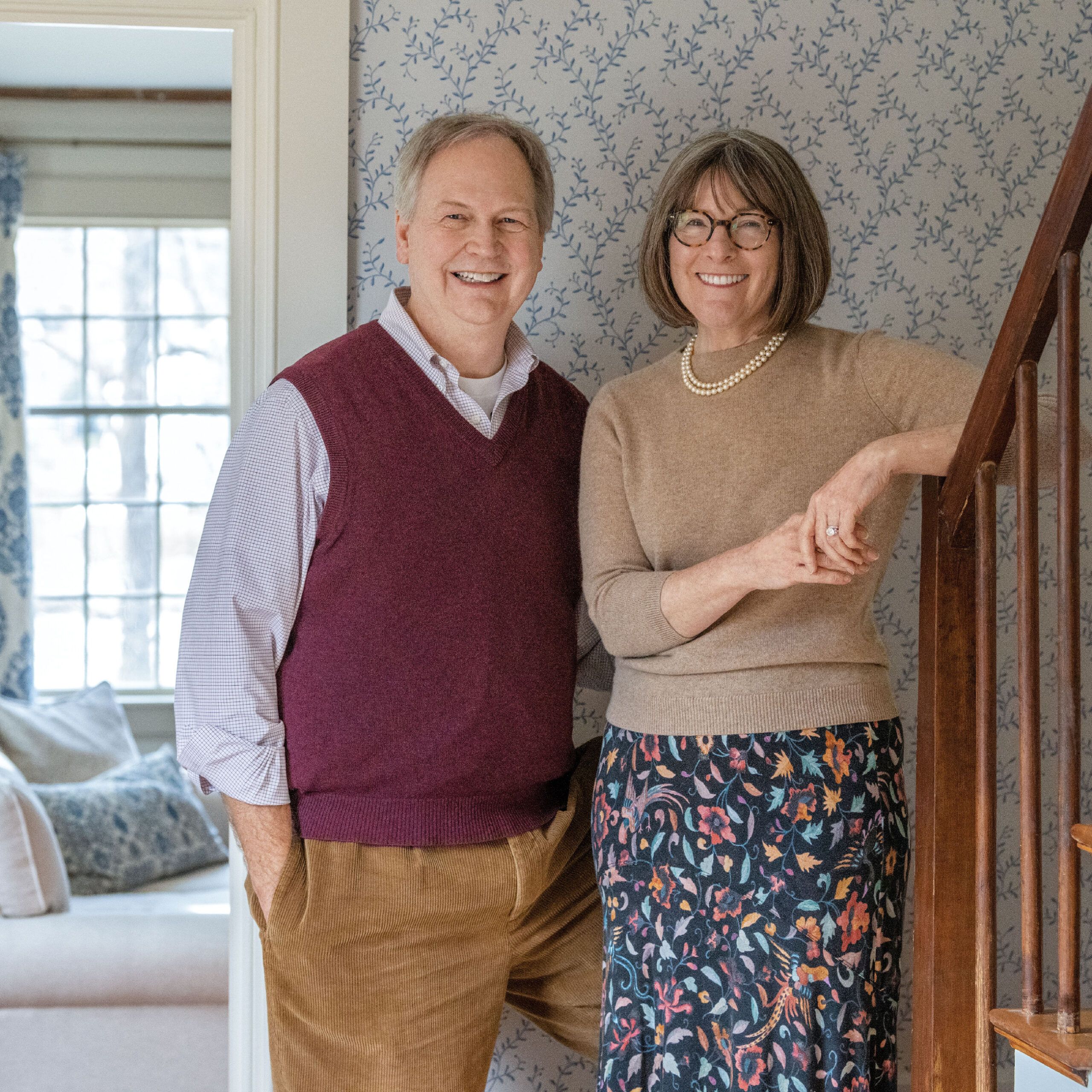
Where others might have seen only rotted sills, sagging floorboards, and windows so drafty the kitchen cabinets blew open in a gale, Bill von Oehsen and Helen Moore von Oehsen saw beauty, history, and potential. They fell in love with the 1720 house sited along the Ipswich River and committed to its renewal, enlisting TOH home builder Charlie Silva for the 16-month renovation, which This Old House documented as part of its 44th television season.
“Our main goals when we started this project were to bring this house back to its original beauty and to create a functional living space for today,” says Bill. That meant making room to host four adult children, extended family, and friends, as well as home offices for Bill, an attorney, and Helen, a biologist, who both work remotely.
For the oldest part of the house, the guiding principle was to honor the integrity of its 1720 structure. Fortunately, the original timber frame was sound: Exposed oak and pine timbers form the framing, with pegs still holding the mortise-and-tenon joinery in place. To highlight those bones, the homeowners opted to gut walls, ceilings, cabinets, fireplaces, and woodstoves that were added later, to reveal as much of the original work as possible.
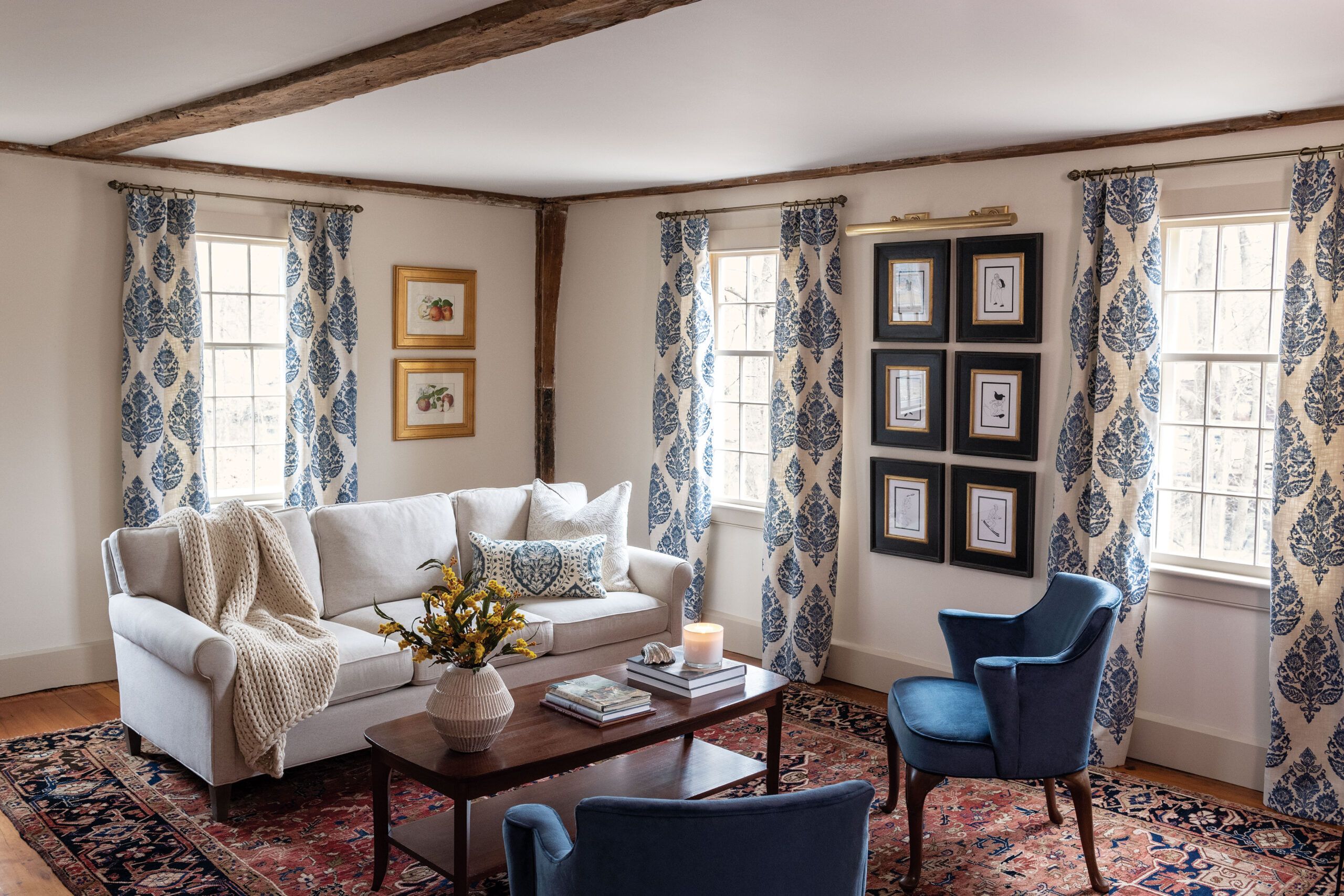
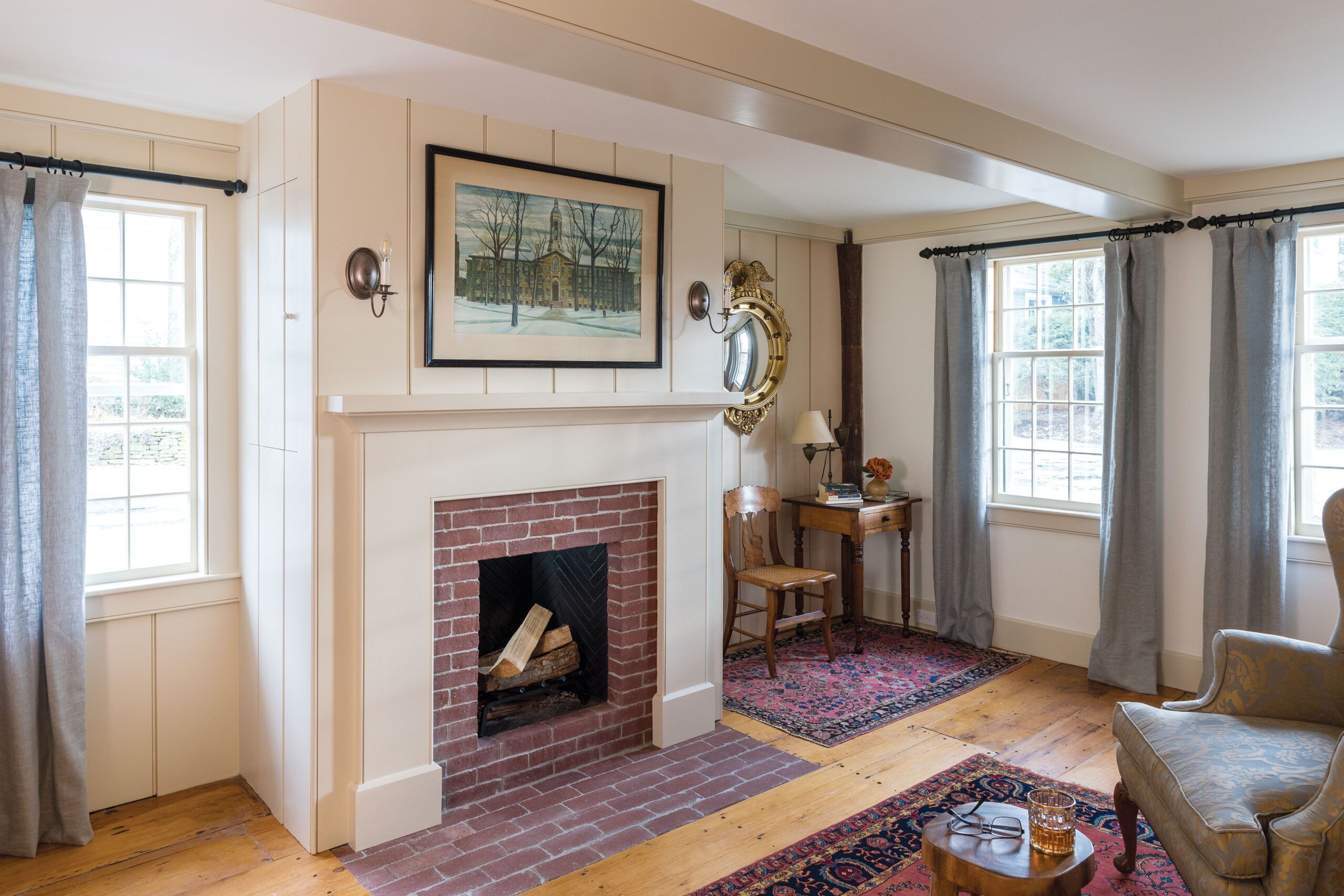
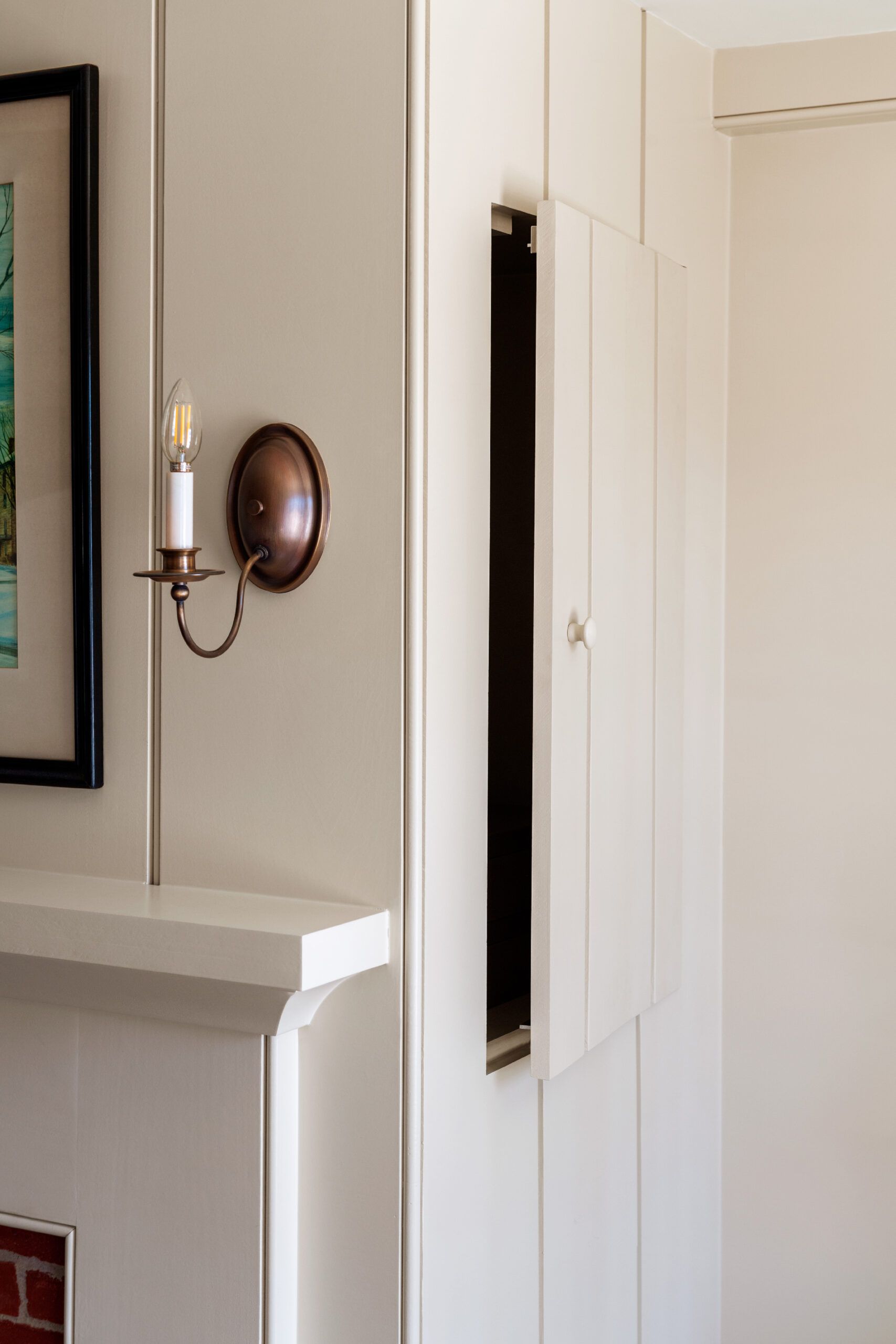
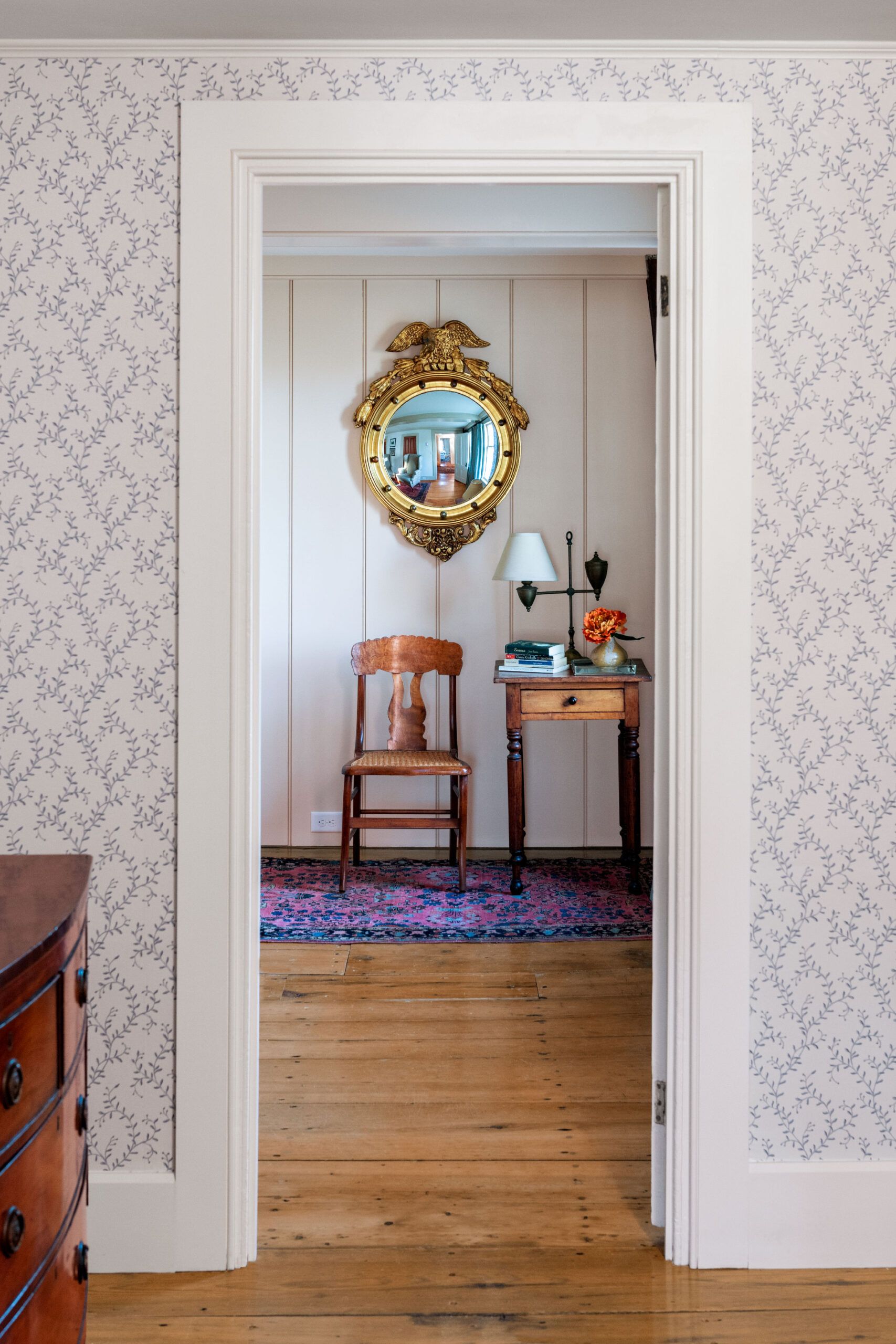






Today, the first-floor living room is the most authentic room in the old house, featuring exposed gunstock posts—narrow at the bottom and flared at the top—original pine floorboards, and a summer beam that is part of the 1720 timber frame. By contrast, the first-floor den ended up needing more work than anticipated to turn it into a comfortable office for Bill. It’s now his favorite room in the house: “I walk in and see the gunstock posts and old pine floors, and I feel like I am stepping back in time,” says Bill. “It’s inspiring.” The couple turned a space between the living room and Bill’s office into a pantry bar, with cabinets made from wood salvaged from the attic.
The second floor of the 1720 structure holds two bedrooms, as it always has, now upgraded with a shared full bath and ready to welcome guests. To complement exposed timbers, Helen asked that salvaged wood be made into built-in desks —big enough for a laptop—in the bedroom window wells created by the gambrel dormers.
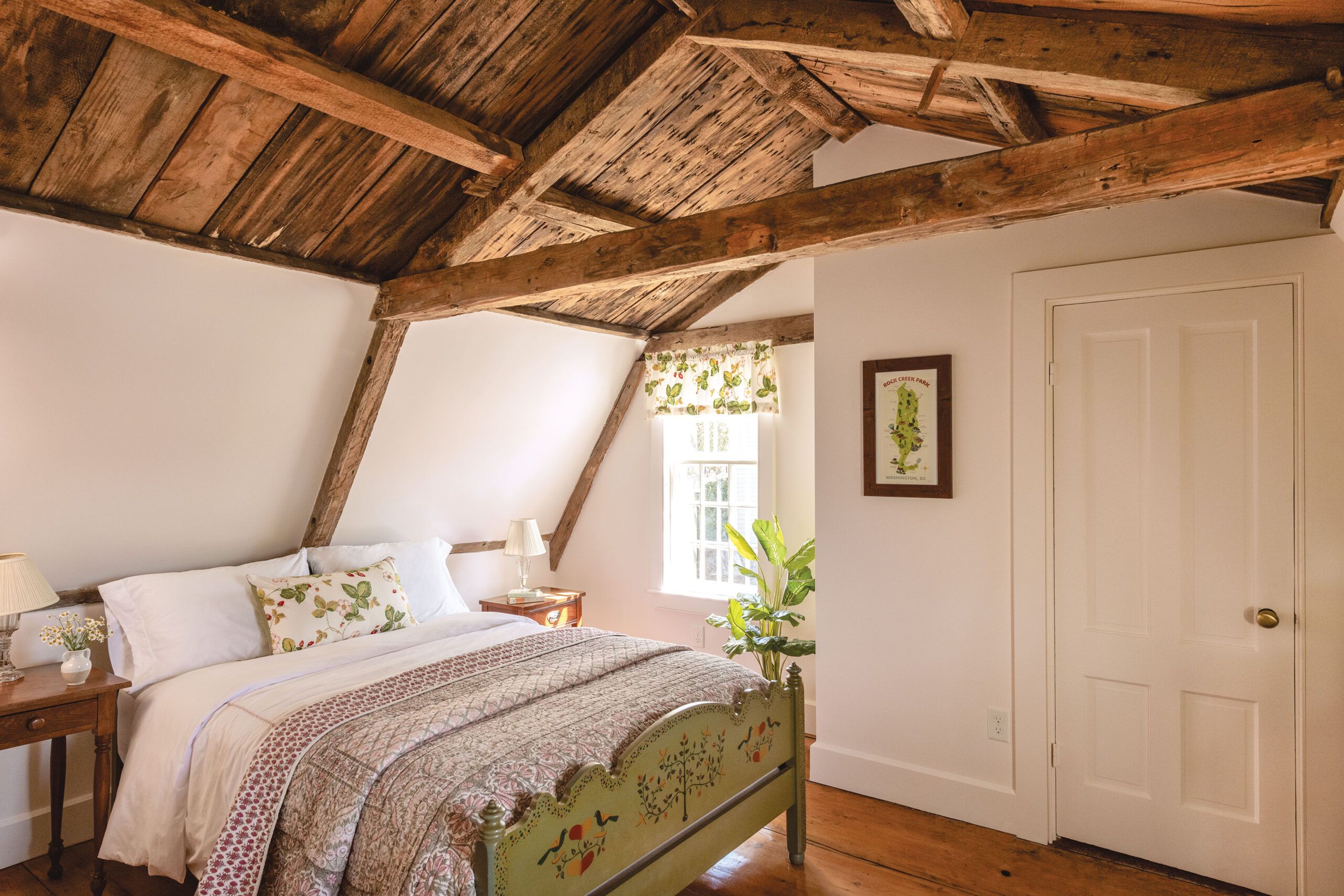
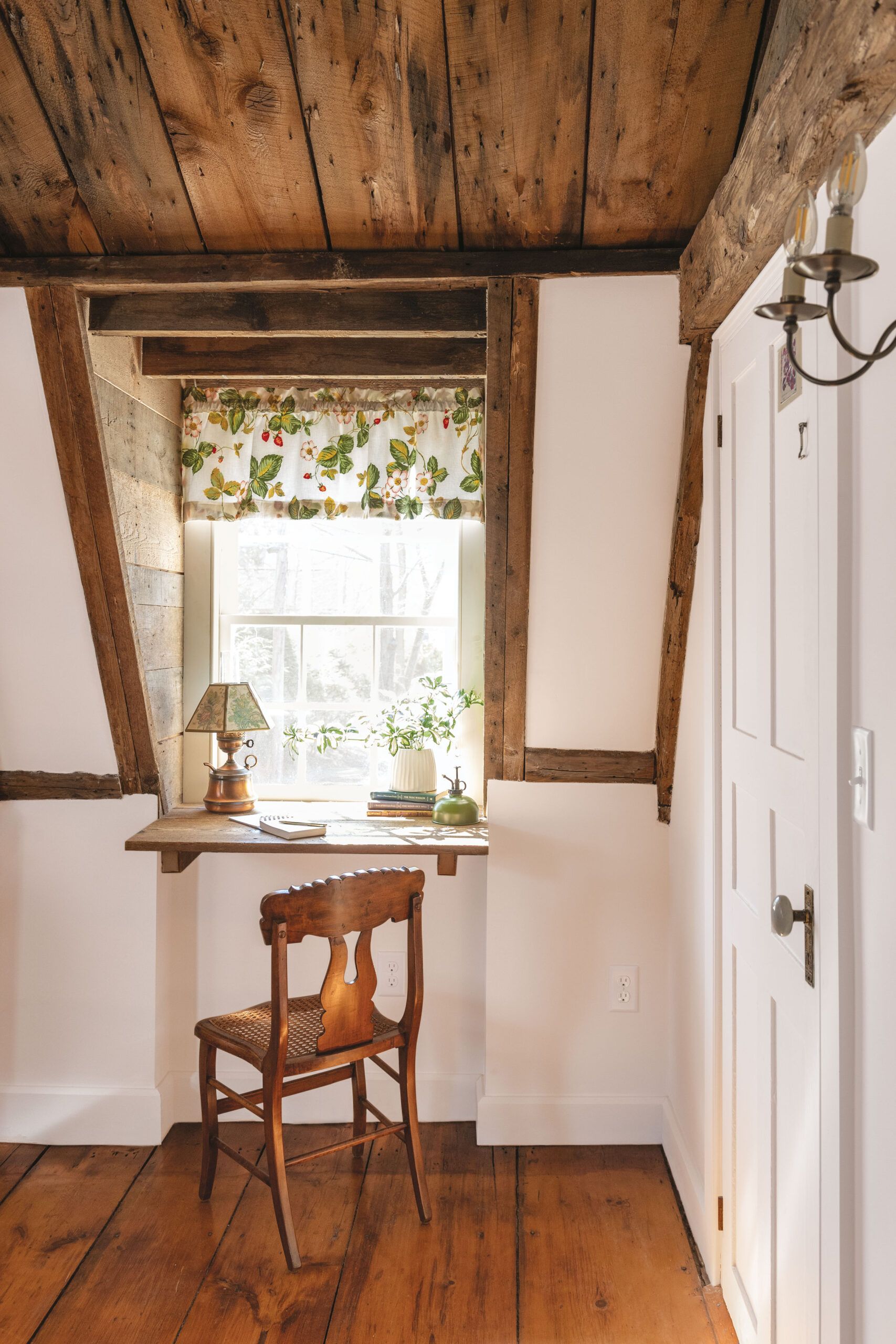
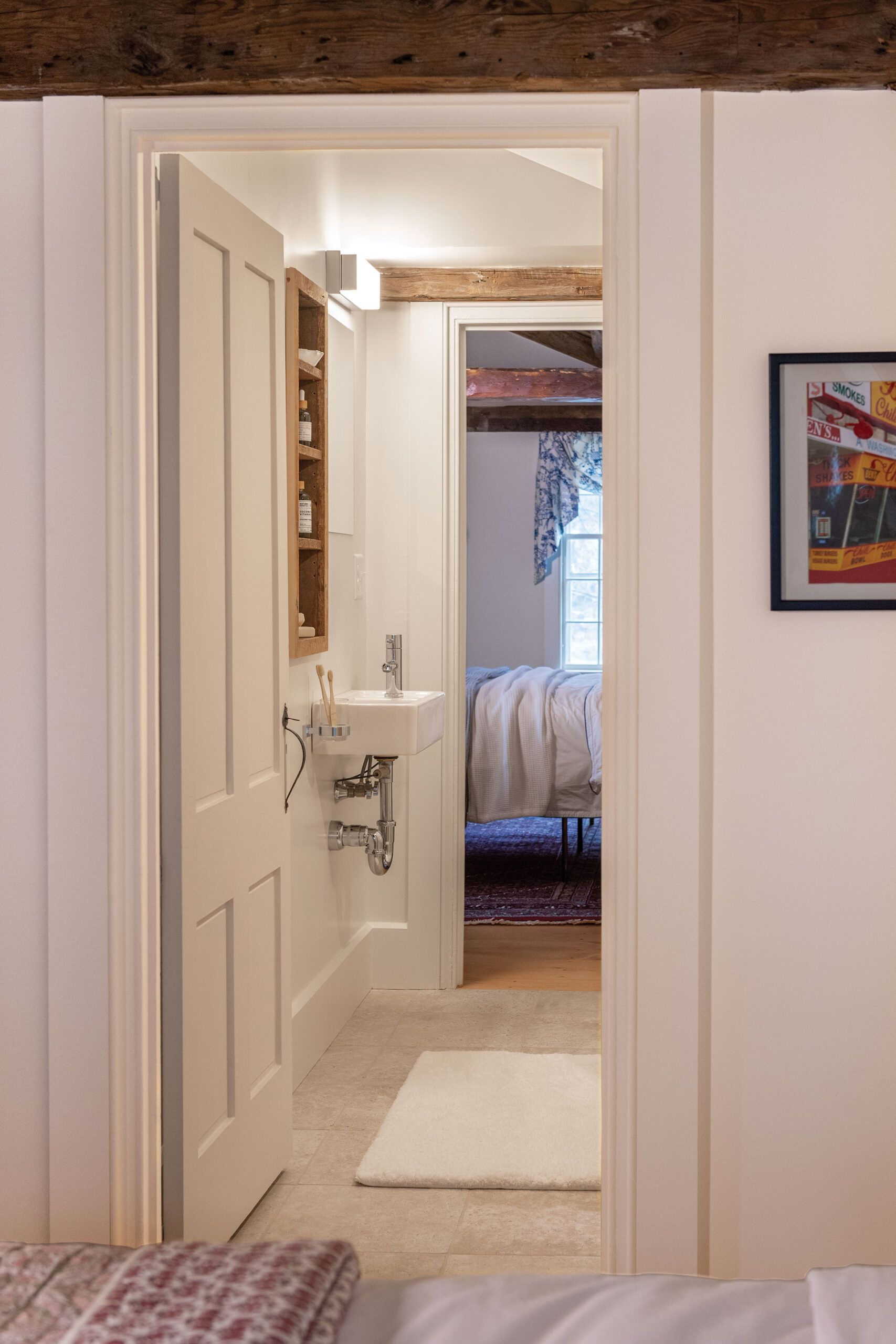
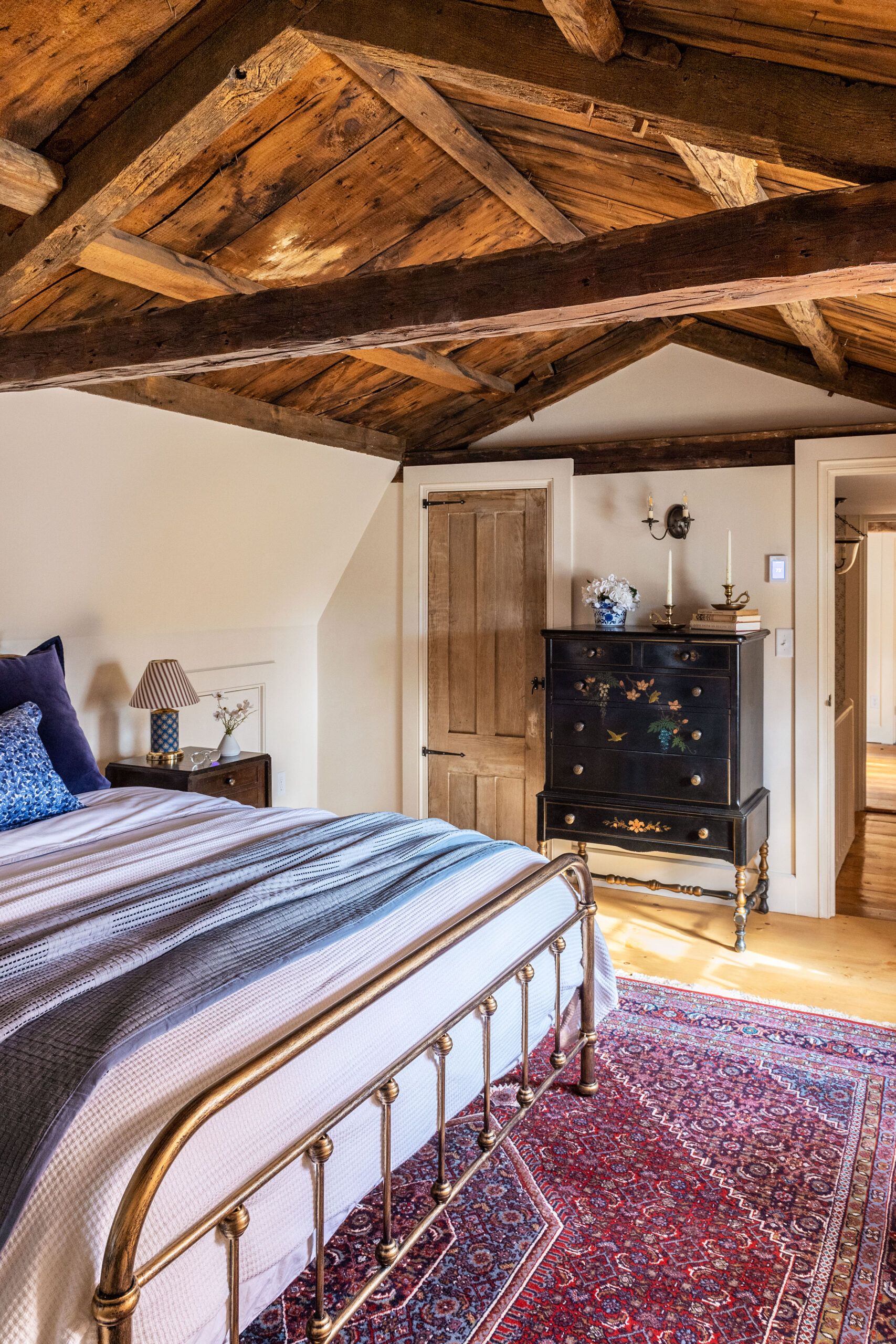




“We love the old gambrel house and thinking about all the history that happened here,” says Helen, who, with Bill, takes pride in the fact that their house is one of the country’s oldest—designated as a First Period house—and was once owned by a Revolutionary War soldier. “To be able to preserve this house and learn about its history has been truly exciting for us.”

Along with the highs of old-house renovation come some lows, however; a timber-framed one-story ell built in the early 1720s on the rear of the original house could not be saved, largely due to the poor condition of the second story, which was added in the 1870s. The ell spaces included the drafty kitchen, the low-ceilinged dining room, the saggy-floored additional bedrooms, and a dated bath that Bill and Helen had expected to renovate; when they had to demolish the ell, they had an opportunity to rethink the space.
Working with architect Ben Nutter, the homeowners came up with a plan for a new one-story, open-plan ell that has kitchen, dining, and family room areas with windows that look out to the river and a cathedral ceiling overhead. The approach called for reusing timber frames from the 1720s ell to define the space. “This is the area for day-to-day living and entertaining, so we highlighted the view and added a wow factor with the cathedral ceiling,” says Nutter.
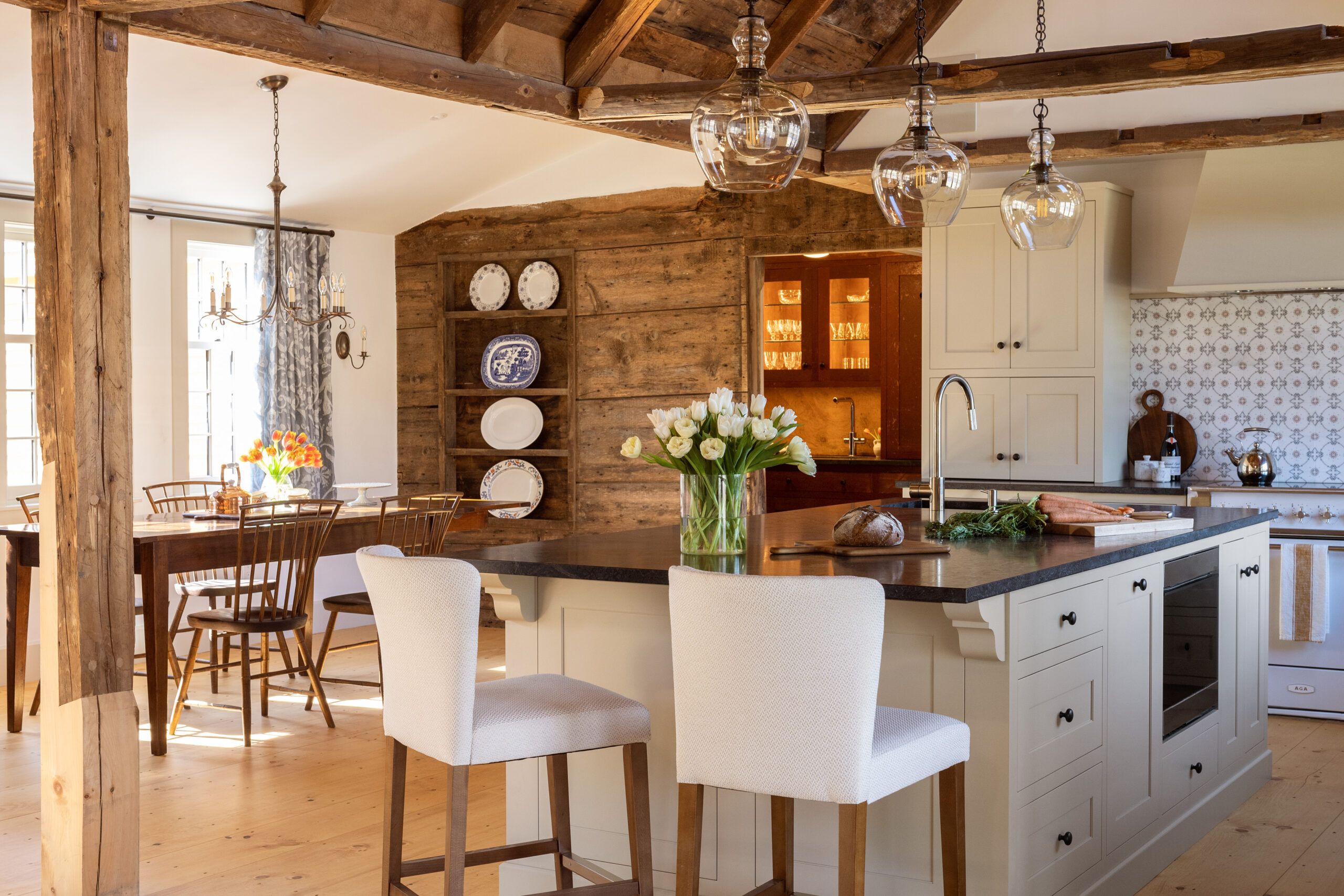
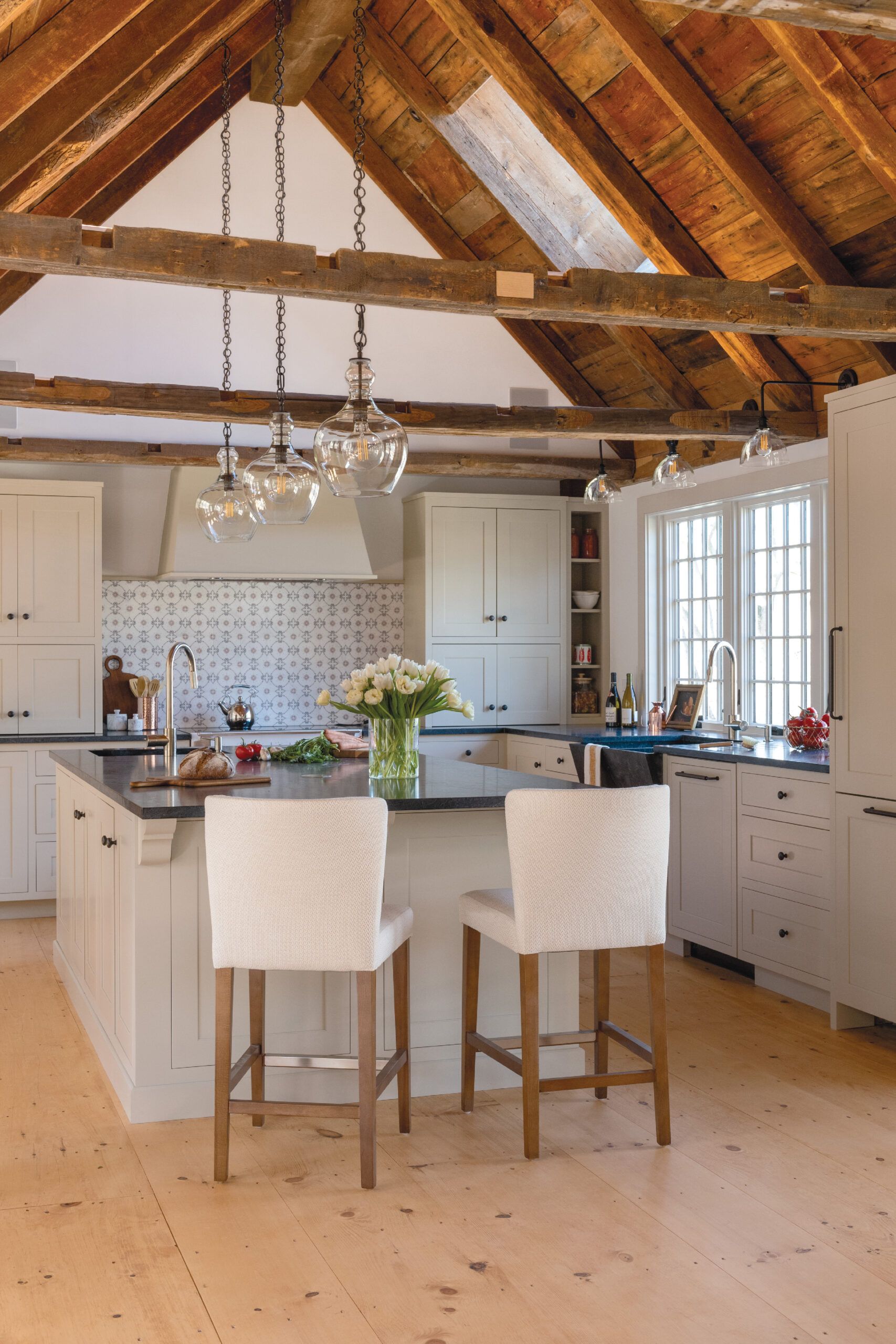
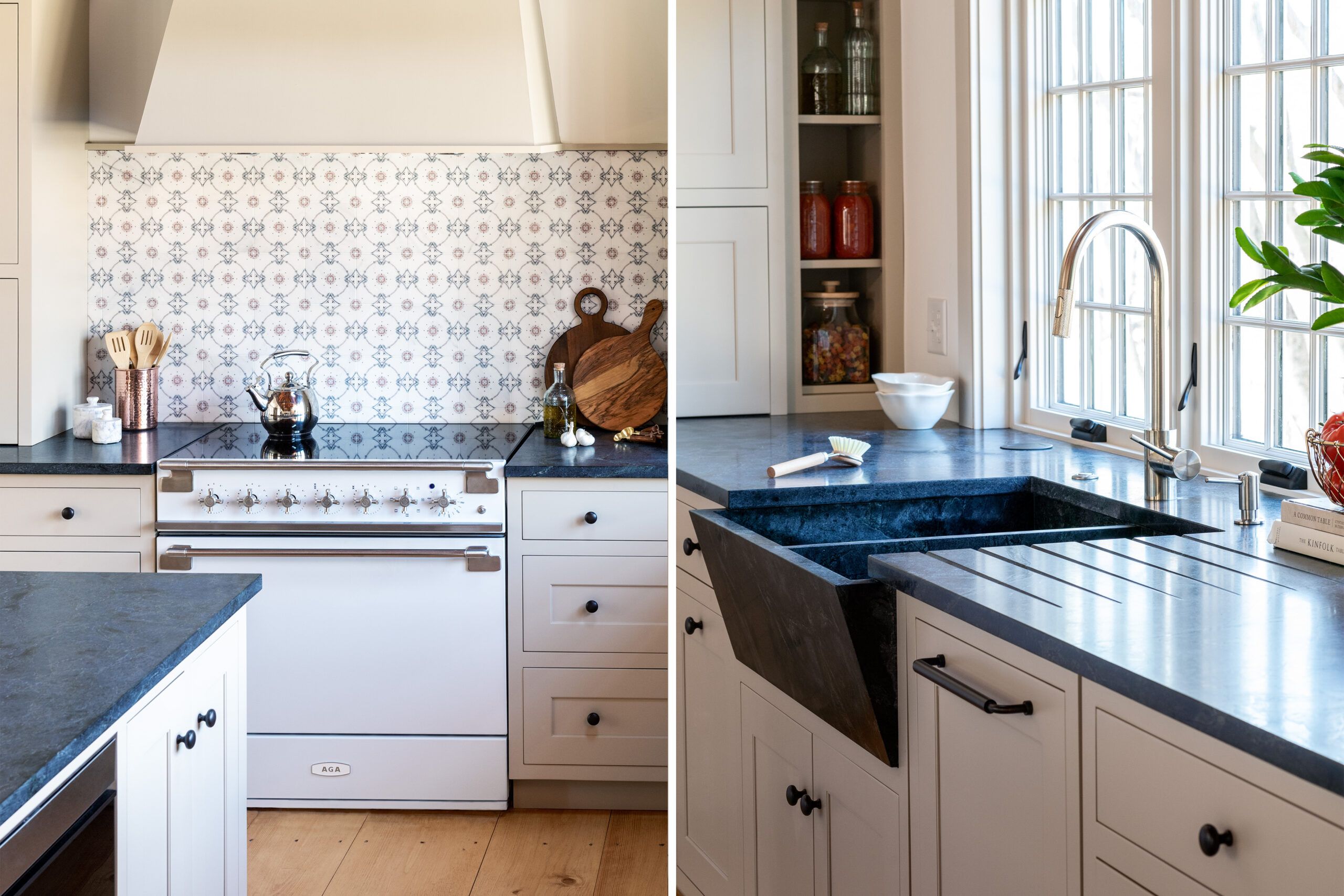
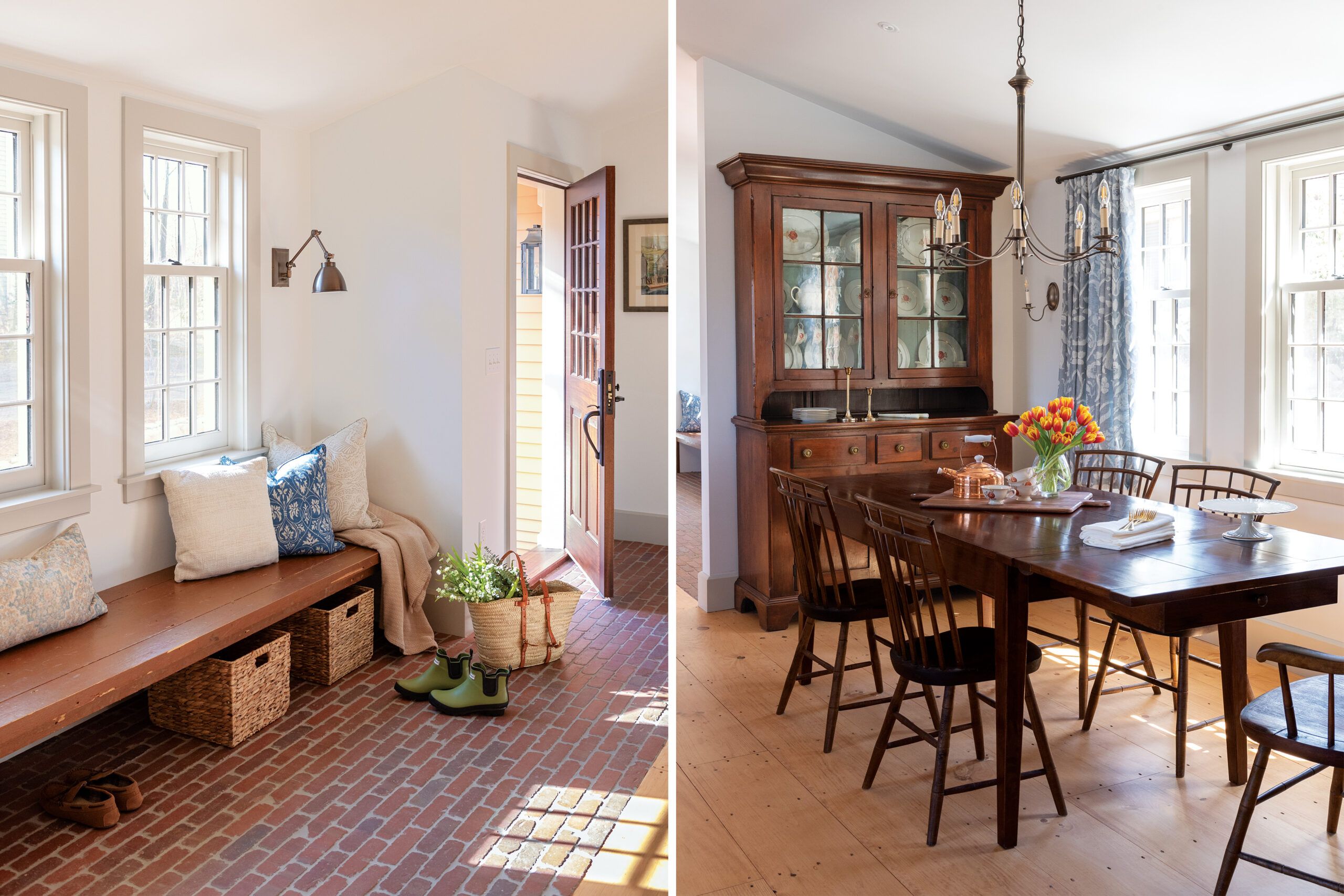
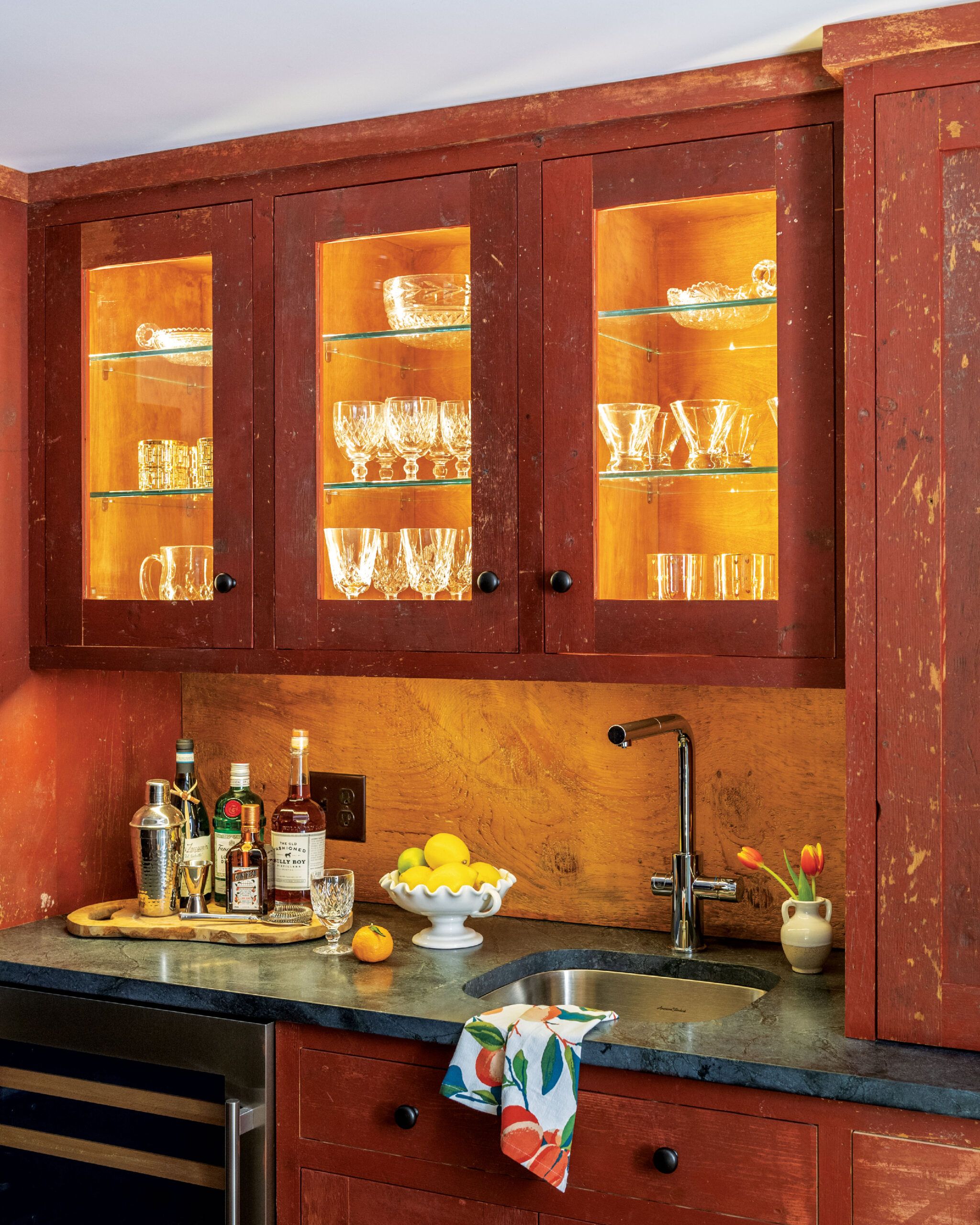





Bill and Helen’s devotion to saving as many pieces of the old house as possible turned the cathedral ceiling into a dramatic showpiece. When they knew the ell had to be demolished, the couple pulled up 300-year-old boards from the old ell’s attic, and in the process experienced a lightbulb moment. “I looked up and thought: Wouldn’t it be great if we could reuse the old attic roof sheathing and rafters for the new cathedral ceiling?” recalls Helen.
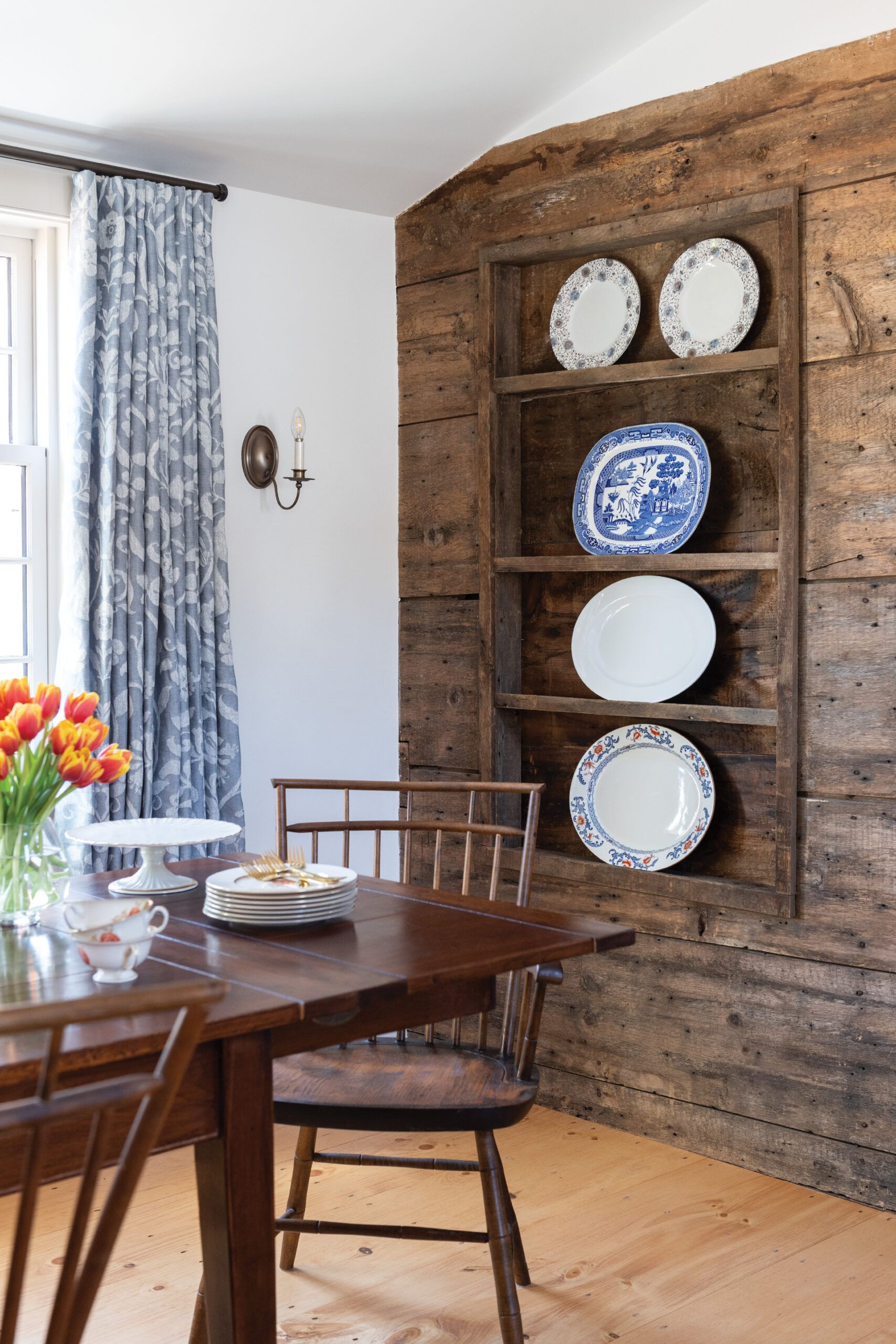
Charlie made it happen, but it took painstaking piecework. He first lined the new ceiling with dark-painted plywood to camouflage any gaps, then put the salvaged boards over it, strategically placing rafters over the seams of the antique boards, which he lined up end to end to cover the entire 35-foot-long ceiling. To complete the looks-like-it-was-always-there effect, Charlie aligned the rafters with the 1720s ell’s tie beams, which, with their posts, were removed, repaired, and reinstalled to define the open area.
“Saving and reusing old boards makes all the difference in this space, and it’s to Bill and Helen’s credit,” says TOH host Kevin O’Connor. “Every time they could have opted for a smooth new wall or ceiling, they came up with a different answer.” The old boards of the cathedral ceiling are particularly intriguing because of the contrast with the contemporary kitchen just below.
Working with kitchen designer Karen Swanson, Bill and Helen created a space ready for the serious cooking and entertaining they love to do. An ample 4½-by-9-foot island doubles as a prep zone and a casual eating area, complemented by custom-made perimeter cabinets and drawers along two walls. The apron sink is set along a windowed wall with views of the river. Like the sink, the counters are soapstone, a material Helen has worked on for much of her career as a biologist. “This is the first time I’ve had soapstone in my home, but I have always wanted it,” she says.
Rebuilding the ell also offered an opportunity to create an entry more in keeping with the 21st century than the 18th century—although the old house’s original entry is still in place. Now the main doorway is at the end of a new path on the street side, where guests step into the ell’s great room. “It’s absolutely by design that people see that view as they step in the door,” says Bill. “With the old wood ceiling, this room is stunning, and it amazes me every time I walk in.”
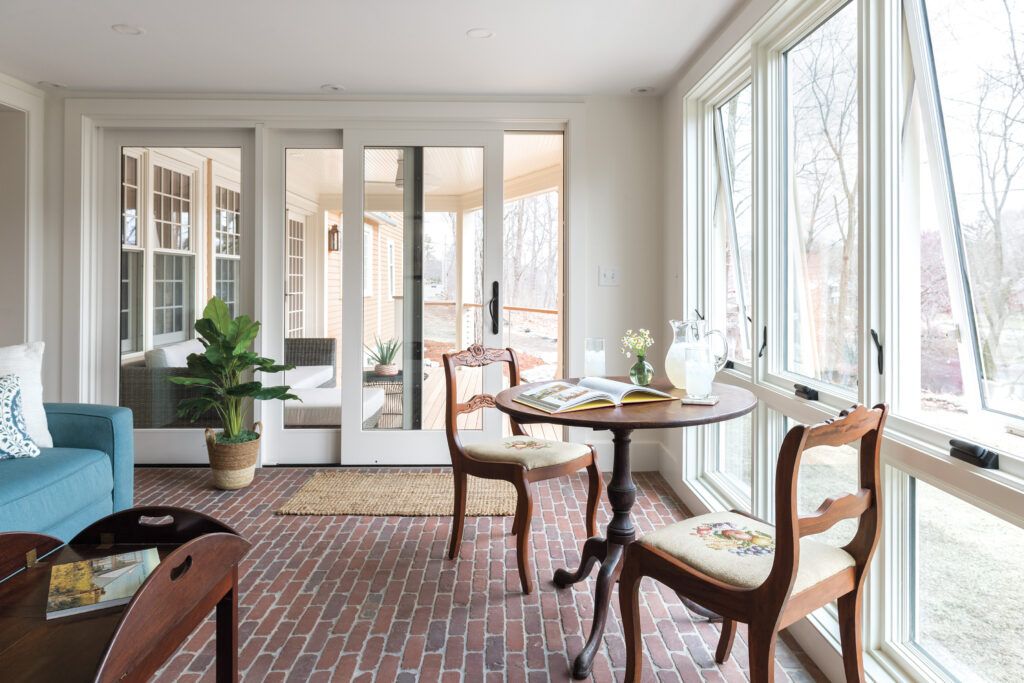
Completing the house is a two-story addition, with a garage, storage areas, and a sunroom with a river view on the first floor and a primary suite and Helen’s office on the second floor. The primary bedroom also faces the river—one of Helen and Bill’s wish-list items. “We wanted a serene feeling here,” says Helen of the suite’s soothing cream-and-white palette.
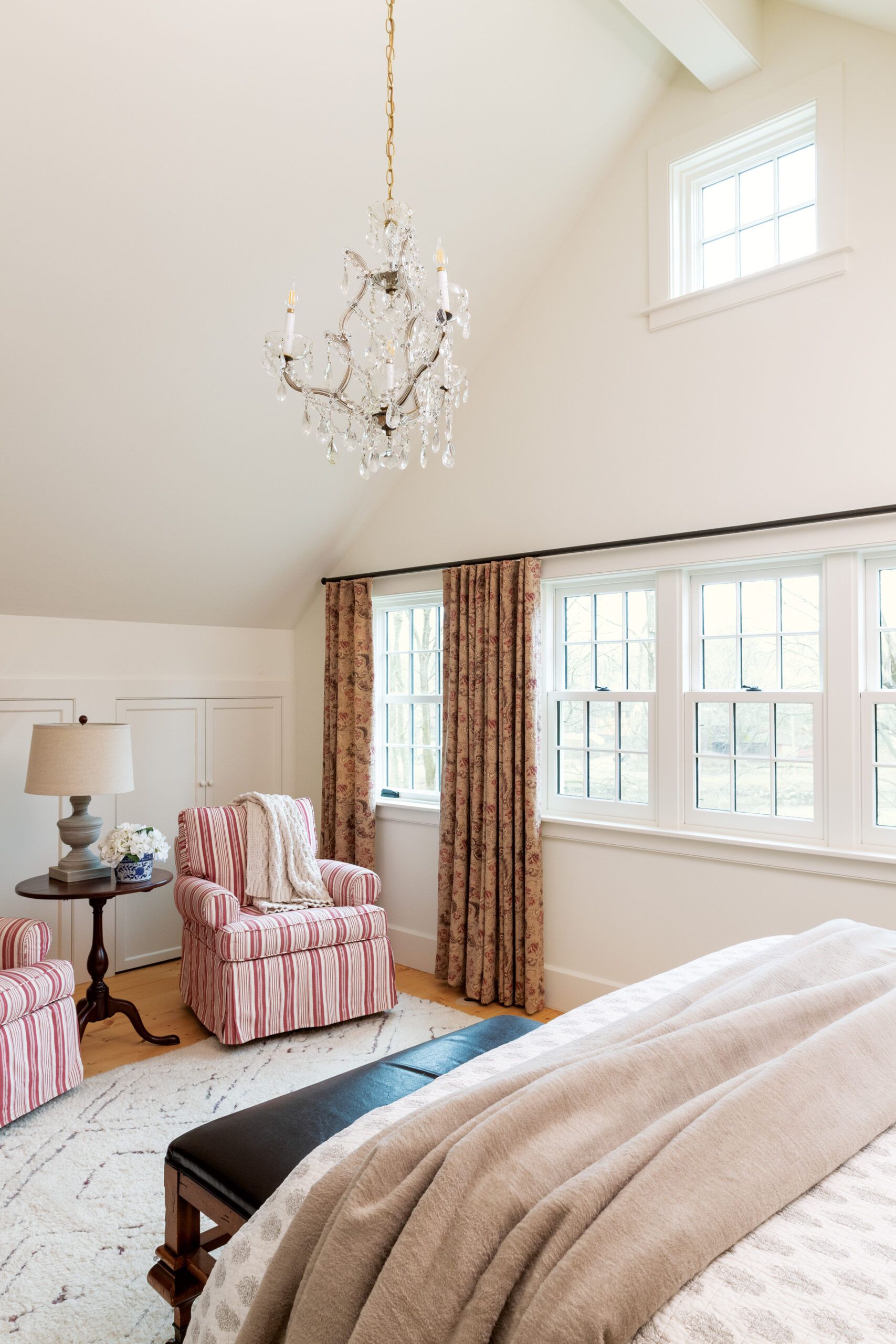
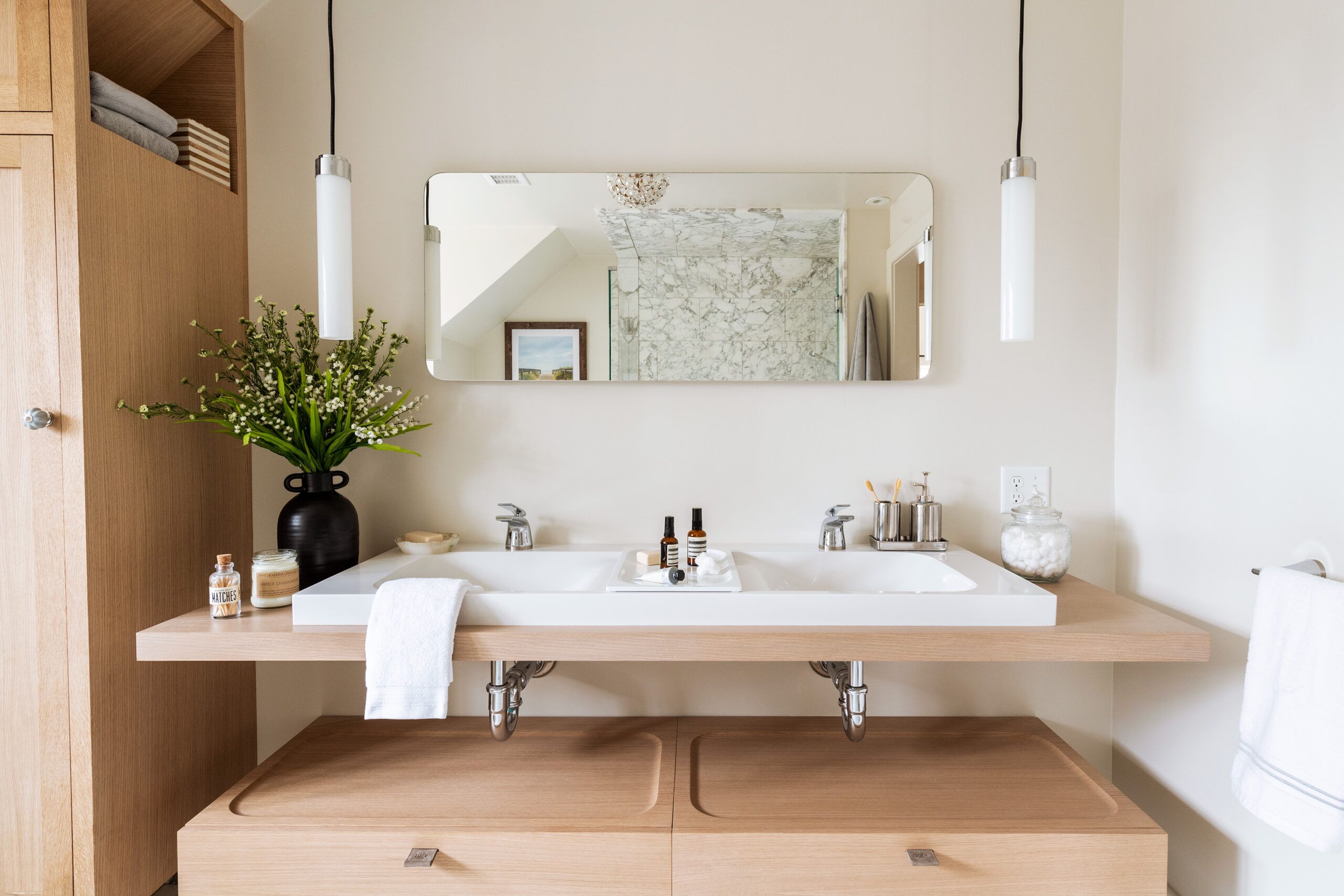
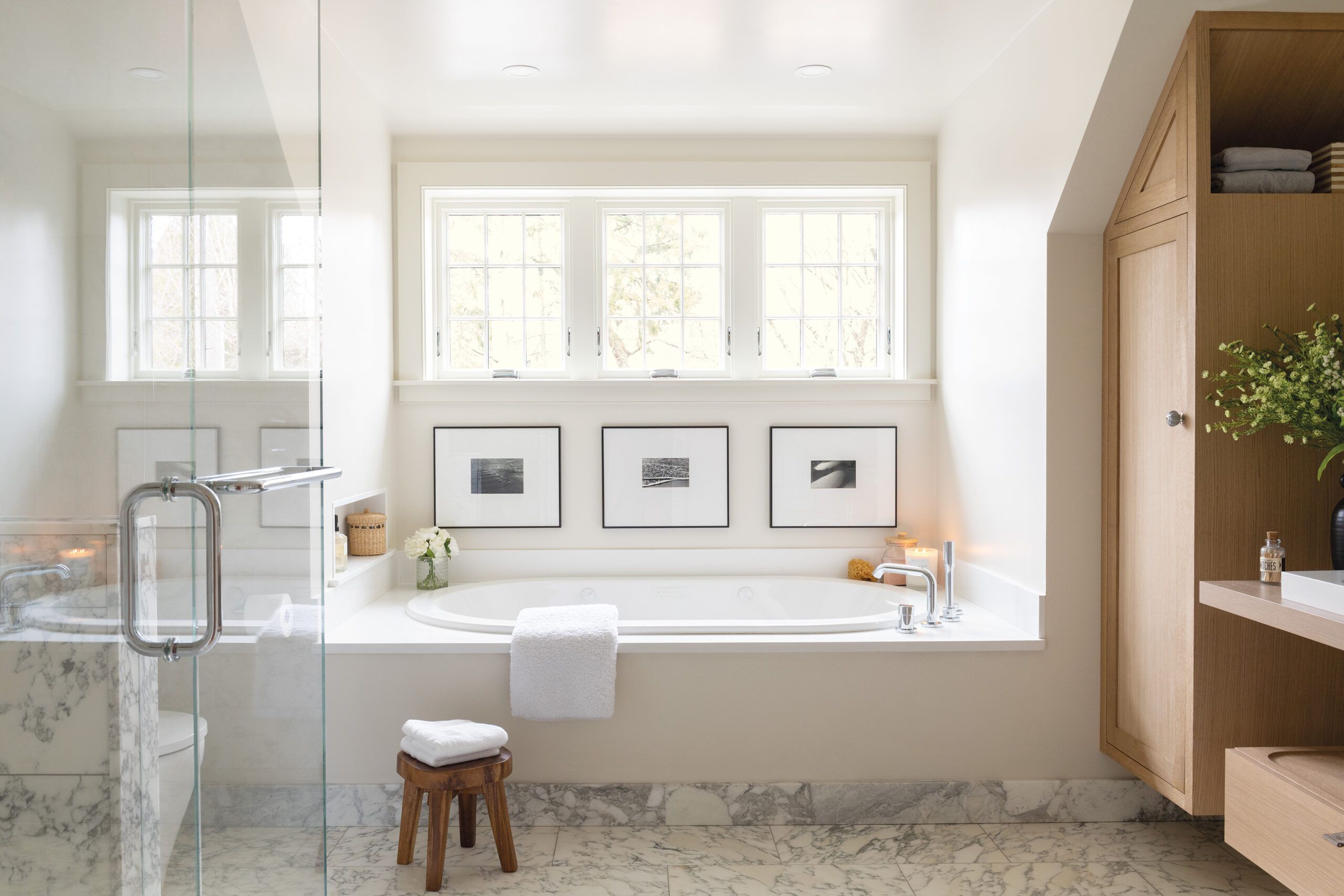
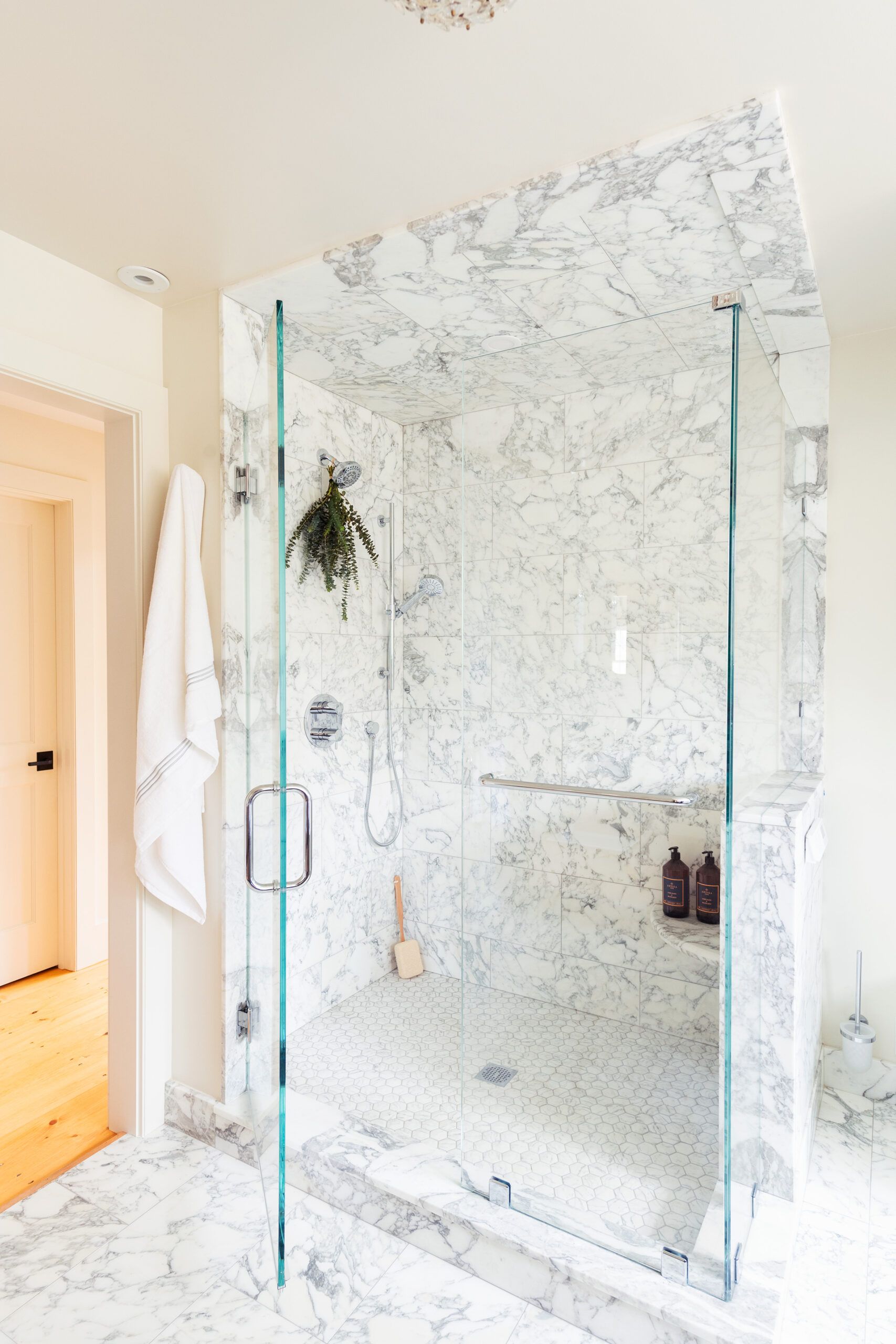
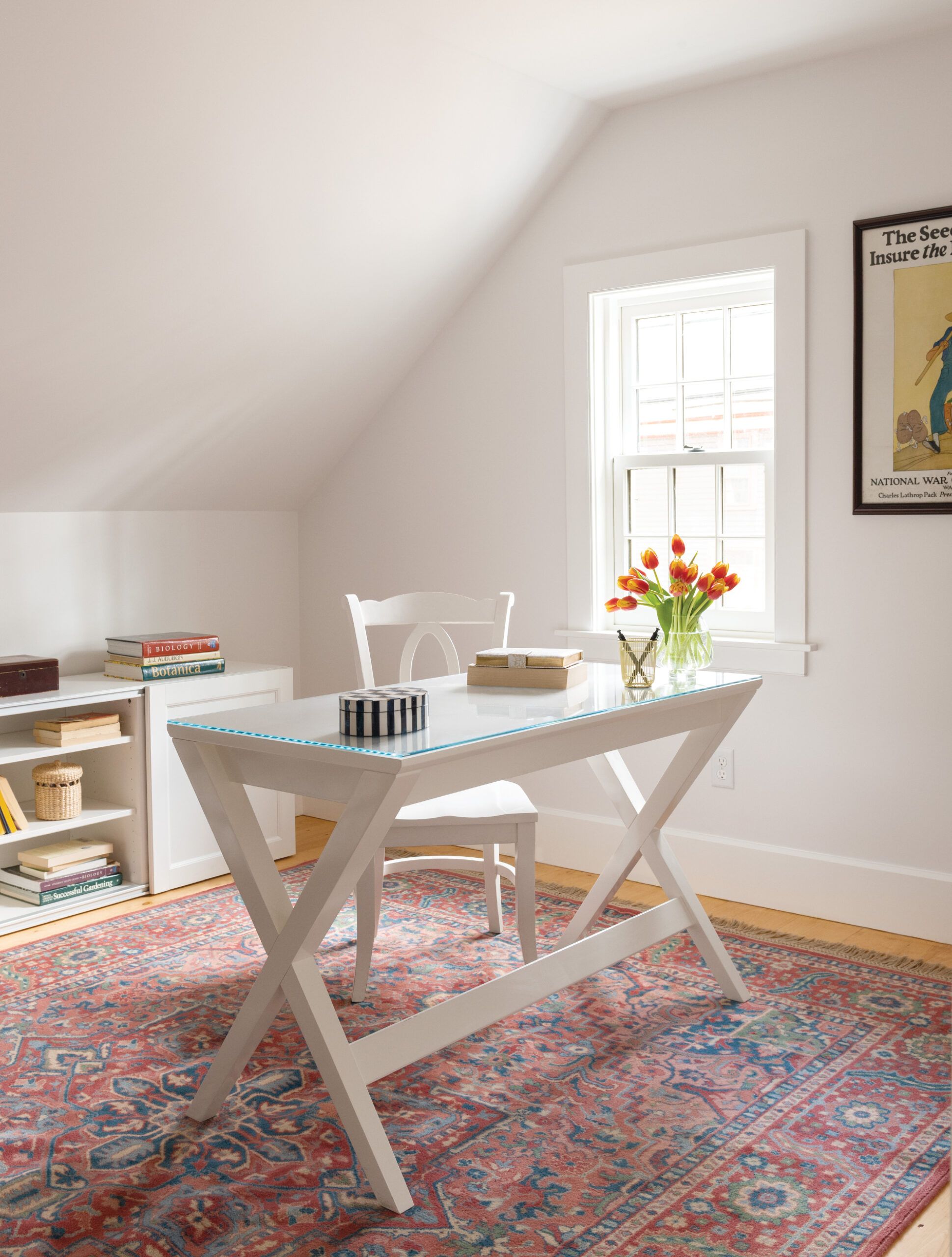







To provide comfort throughout, the TOH mechanicals team designed a hybrid HVAC system: two cold weather inverter heat pumps deliver heating and air-conditioning via ductwork, while a gas-fired condensing boiler supplies domestic hot water as well as water for the hydronic radiant floor heating systems in the garage, basement, and baths. Installation presented some challenges. “With windows everywhere in the new spaces, no lateral way to run ductwork because of the great room’s cathedral ceiling, and limited space in the 1720 part of the house, this project forced us to find a new level of artistry in designing HVAC mechanicals, making the most of the few ceilings, closets, and wall cavities where we could run ductwork,” says TOH plumbing and heating expert Richard Trethewey.
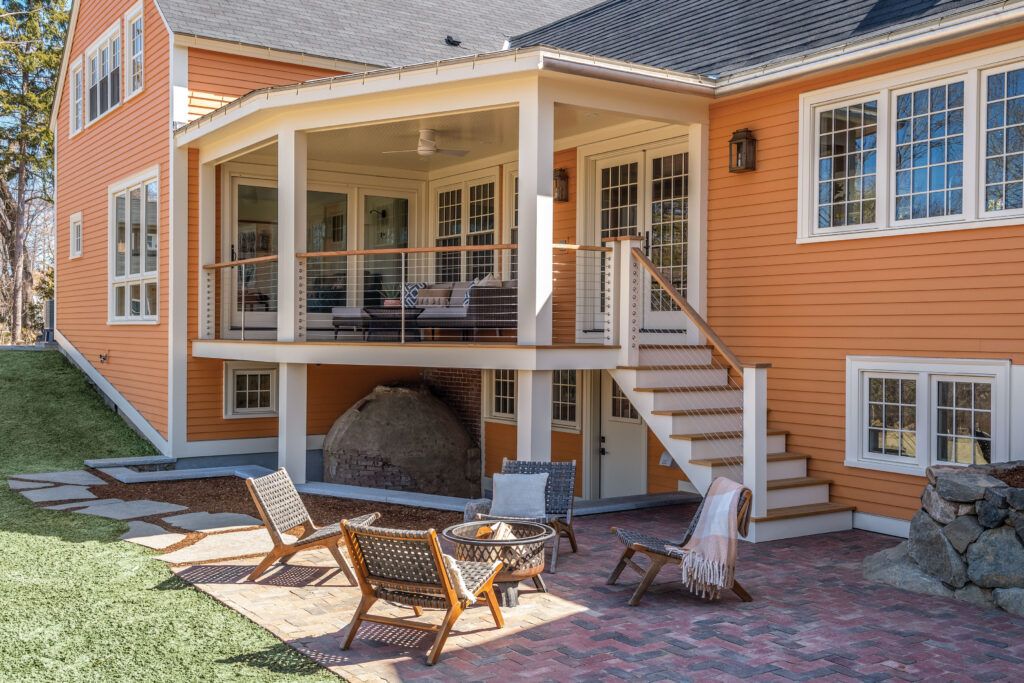
Bill and Helen’s vision for the house extended to the entire 11/3-acre riverside site, where outdoor spaces include a stone patio with a water view; planned areas of wildflowers near the water will enhance the view. Landscape designer Rue Sherwood laid out a new driveway and walkway to the new street-side entry, with native plantings lining the way; a stone retaining wall near the new door was built at seating height for extra functionality. A stormwater-management system, featuring two 2,500-gallon underground cisterns, will collect runoff from the house’s gutters, which will be pumped out to irrigate the landscaping. “Every aspect of this plan was approved by the Ipswich Conservation Commission with great results: The combination of native plants, outdoor living spaces, and a smart stormwater system makes this house truly unique,” says TOH landscape contractor Jenn Nawada.
As has been the case for more than three centuries on this site, a house stands ready for a family to live, work, and enjoy the beauty of the river and the comforts of a well-built home. “We can’t believe how lucky we were to find this place,” says Bill. “It’s so nice to wake up and see the river.”
“The finished house is gorgeous,” adds Helen. “And looking out the windows here, well, that’s just heaven.”
Floor Plans
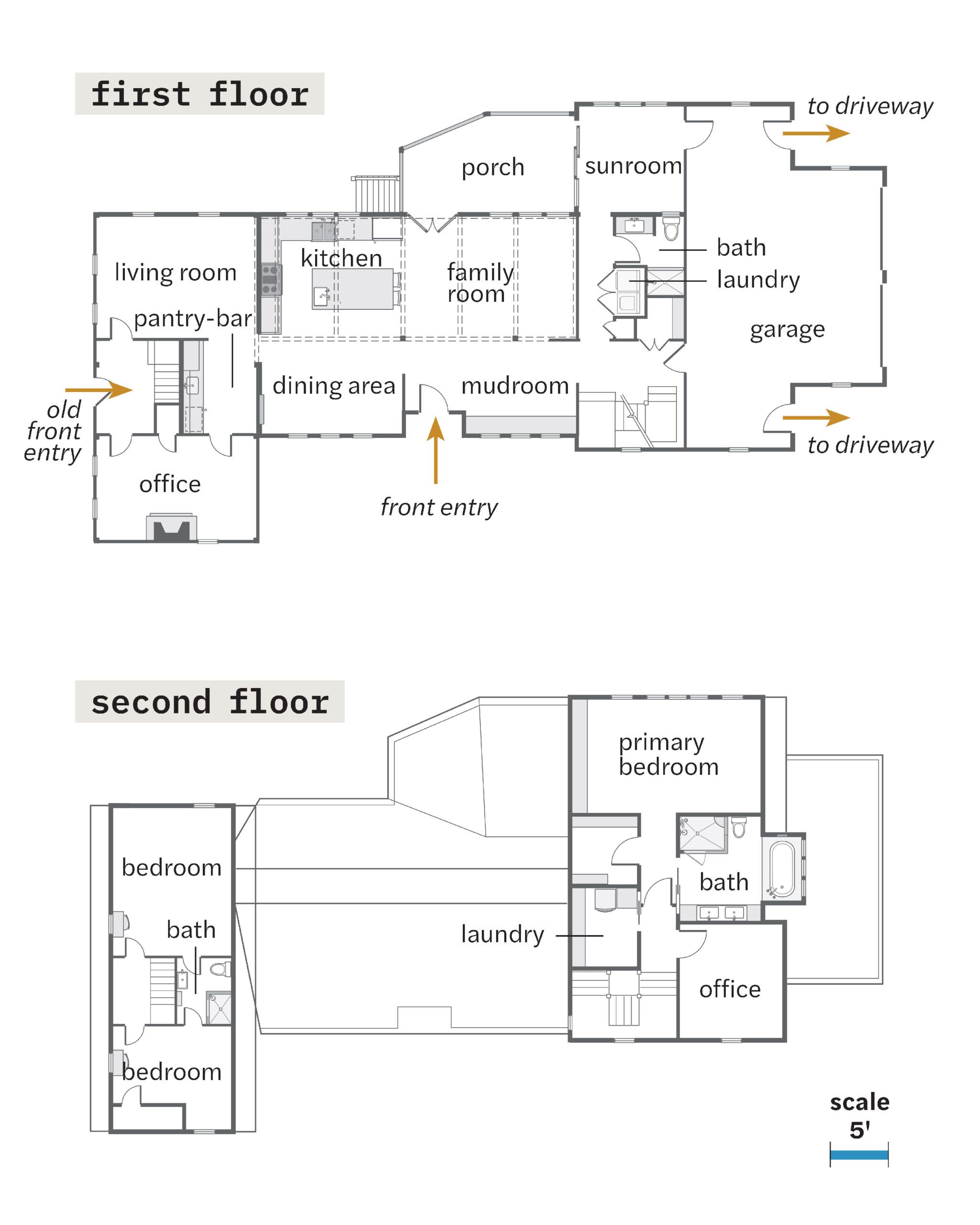
The renovated house spans the centuries: The original 1720 gambrel roof structure connects to a new one-level ell that leads into a gabled garage-and-primary-suite addition, for a total of three bedrooms, three baths, and two offices in 3,050 square feet of living space (excluding the ell basement). In the oldest part of the house, two second-floor guest bedrooms gained modern convenience with a shared bath; a first-floor den became an office. The rebuilt ell, now one story with an open plan, hosts kitchen, dining, and family room spaces, plus a new mudroom entry. The garage addition’s second floor has a home office and a primary suite with its own laundry.
